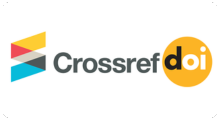Quadruple Helix Model for Women Migrant Workers Protection During Natural Disaster; learn from COVID-19 protection preparations
DOI:
https://doi.org/10.11594/ijssr.05.01.25Keywords:
Disaster, Quadruple helix, Women migrant workersAbstract
Cross-sectoral cooperation is urgently needed in the protection of women migrant workers. Especially migrant workers from West Java who are the third largest contributor in Indonesia after East Java and Central Java. The protection of women migrant workers requires a gender sensitive approach, because each protection will have a different impact on women and men. Natural disaster made the women migrant workers were affected economically, socially, and mentally. Cross-sectoral collaboration needs to be carried out by BP2MI, private companies providing employment, civil society represented by non-governmental organizations and mass media, and academics represented by researchers. Quadruple Helix theory by (Carayannis & Campbell, 2010) is an approach in creating a synergy of cooperation from four actors, namely A (Academician), B (Businessman), C (Civil Society) and G (Government) to build cross-sectoral collaboration in West Java. A qualitative research method with descriptive exposure was used in this study. The results of the study show that the actors involved in the protection of women migrant workers have shown cross-sectoral collaboration named Migrant Worker Resources Center one-stop service (LTSA- MRC) with gender sensitivity perspectives.
Downloads
References
UN Women, “SDG indicators,” 2017.
West Java Province, “WEST JAVA PROV-INCE IN WEST JAVA FIGURES PROVINCE IN FIGURES 2020,” 2020.
KPPPA, “Buku Profil Perempuan 2020,” 2020.
SAPA institute, “Policy Brief,” 2021.
D. Martiany, “FENOMENA PEKERJA MI-GRAN INDONESIA: FEMINISASI MIGRASI,” Kajian, 2013, doi: 10.1029/2009JF001293.
S. Pandey, “Social security for migrant workers during COVID-19,” Economic and Political Weekly. 2020.
M. A. Ridhoi, “Pekerja Migran Ikut Memukul Ekonomi RI Saat Pandemi - Ana-lisis Data Katadata,” Jakarta, Aug. 2020. Accessed: Oct. 26, 2021. [Online]. Availa-ble: https://katadata.co.id/muhammadridhoi/analisisdata/5f56f23fa8534/pekerja-migran-ikut-memukul-ekonomi-ri-saat-pandemi
A. Natalis and B. Ispriyarso, “Politik Hukum Perlindungan Pekerja Migran Per-empuan di Indonesia,” Pandecta: Research Law Journal, vol. 13, pp. 109–123, 2018, doi: 10.15294/pandecta.v13i2.15784.
Biro Hukum dan Humas KPPA, “Siaran Pers Nomor: B-023/SETMEN/HM.02.04/01/2021,” Jakar-ta, 2021. Accessed: Dec. 11, 2021. [Online]. Available: https://www.kemenpppa.go.id/index.php/page/read/29/3050/sinergi-kemen-pppa-dan-media-dalam-isu-pemberdayaan-perempuan-dan-perlindungan-anak
A. Lukihardianti and A. Yulianto, “Unpar akan Dirikan Pusat Studi Diaspora,” Re-publika.co.id, Bandung, Oct. 11, 2021. Ac-cessed: Dec. 12, 2021. [Online]. Available: https://republika.co.id/berita/r0tcm1396/unpar-akan-dirikan-pusat-studi-diaspora
Yayasan SAPA and UN Women, “Laporan-Riset-Perda-Pergub-Jabar-SAPA-UN-Woman,” 2020.
E. G. Carayannis and D. F. J. Campbell, “Triple helix, Quadruple helix and Quintu-ple helix and how do Knowledge, Innova-tion and the Environment relate to Each other? a proposed framework for a trans-disciplinary analysis of sustainable devel-opment and social ecology,” International Journal of Social Ecology and Sustainable Development, vol. 1, no. 1, pp. 41–69, 2010, doi: 10.4018/jsesd.2010010105.
Widjajani, A. Fajarwati, A. Hidayat, and A. Hidayat Universitas Langlangbuana Ban-dung, “MODEL QUADRUPLE HELIX SE-BAGAI MODEL INOVASI DAERAH (KAJIAN LITERATUR),” 2019. Accessed: Dec. 11, 2021. [Online]. Available: https://lemlit.unla.ac.id/
OSCE, Guide on Gender - Sensitive Labour Migration Policies. Vienna: Organization for Security and Co-operation in Europe, 2009. [Online]. Available: https://www.osce.org/secretariat/37228
J. Morawska-Jancelewicz, “The Role of Universities in Social Innovation Within Quadruple/Quintuple Helix Model: Practi-cal Implications from Polish Experience,” Journal of the Knowledge Economy, 2021, doi: 10.1007/s13132-021-00804-y.
F. Pirlone and I. Spadaro, “The resilient city and adapting to the health emergency. Towards sustainable university mobility,” TEMA-JOURNAL OF LAND USE MOBILITY AND ENVIRONMENT, no. SI, 2020.
Y. P. Zhu and H. W. Park, “Development of a COVID-19 web information transmission structure based on a quadruple helix mod-el: Webometric network approach using bing,” J Med Internet Res, vol. 23, no. 8, Aug. 2021, doi: 10.2196/27681.
National Commission for women New Del-hi, “GENDER SENSITIZATION MODULE,” 2019.
A. M. Kurnia, “Menaker Sebut Ada 4 Langkah Perlindungan PMI Selama Pan-demi Covid-19,” Jakarta, Aug. 31, 2021. Accessed: Dec. 12, 2021. [Online]. Availa-ble: https://money.kompas.com/read/2021/09/01/121026326/menaker-sebut-ada-4-langkah-perlindungan-pmi-selama-pandemi-covid-19.
BP2MI, “MATRIX PEMBAGIAN TUGAS UU BARU,” 2020.
A. N. Sigiro, “Atnike Nova Sigiro,” Jurnal Perempuan, vol. 25, no. 3, 2020, [Online]. Available: http://www.jurnalperempuan.org/uploads/1/2/2/0/12201443/jp106_cjp.pdf
I. Izatifiqa R Putri, “Tingkatkan Perlin-dungan PMI, Kemnaker Dukung Integrasi MRC-LTSA,” Detik.com, 2021. Accessed: Dec. 12, 2021. [Online]. Available: https://news.detik.com/berita/d-5832944/tingkatkan-perlindungan-pmi-kemnaker-dukung-integrasi-mrc-ltsa
ILO, “Pengintegrasian Layanan Migrant Worker Resources Centre (MRC) dengan Layanan Terpadu Satu Atap (LTSA)-P2MI,” 2021. Accessed: Dec. 11, 2021. [Online]. Available: https://www.ilo.org/asia/media-centre/news/WCMS_801228/lang--en/index.htm













